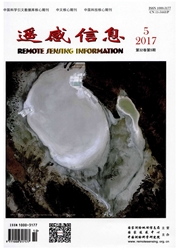

 中文摘要:
中文摘要:
主要基于搭载在Envisat卫星上的SCIAMACHY传感器反演的2003年-2005年间CO柱浓度数据产品,并结合生物质燃烧和土壤等辅助数据对贝加尔湖区域上空CO时空分布特征及其来源进行了分析,发现贝加尔湖区域2003年到2005年间的CO年均值浓度为2.28×10^18molecule.cm^-2,远高于欧亚大陆的本底浓度1.6×10^18molecule.cm^-2;CO浓度具有明显的季节波动,2003年的3月高达2.92×10^18molecule.cm^-2;CO的月均值变化和生物质燃烧具有很强的相关性,贝加尔湖地区4个大城市中赤塔(Chita)的年均值浓度是最高的;各土壤类型上空CO月均值季节变化显著,其中薄层栗钙土(Kh24-2b)类型土壤的振幅达2.91×10^18molecule.cm^-2。
 英文摘要:
英文摘要:
Carbon monoxide(CO) is an important atmospheric pollutant whose emissions and atmospheric concentrations need to be monitored.To trace the gases and aerosol emissions from Siberian biomass burning had strong influence on the global atmosphere.Moreover,the Lake Baikal region is located in southern Siberia in Russia,where has been of particular concern because of its special geographical and ecological significance.This study is to assess the influence of biomass burning and regional pollution in CO levels in the Lake Baikal region.The spatio-temporal gradients of CO over the Lake Baikal was presented,based on the CO vertical columns measured by the SCIAMACHY(Scanning Imaging Absorption spectrometer for Atmospheric CartograpHY) instrument onboard the satellite ENVISAT.The biomass burning dataset(AASTR hotspots) and soil layers were also used in the present study.It was found that the annual averaged CO vertical columns over the Lake Baikal region were up to 2.28×10^18molecule·cm^-2,which were more than the background value 1.6×10^18molecule·cm^-2.The CO vertical columns showed an obvious seasonal variation.The highest peak of CO monthly average was about 2.92×10^18molecule·cm^-2 in March 2003.The variation of monthly averaged CO had a strong correlation with the biomass burning.The annual averaged CO vertical column of Chita was the highest concentration within the several large cities of the Lake Baikal region.The monthly averaged CO variations of soil were also significant,the peak-to-peak amplitude of Kh24-2b soil was over 2.91×10^18molecule·cm^-2.
 同期刊论文项目
同期刊论文项目
 同项目期刊论文
同项目期刊论文
 Detection of acid rain stress effect on plant using hyperspectral data in Three Gorges region, China
Detection of acid rain stress effect on plant using hyperspectral data in Three Gorges region, China Evaluating the spatiotemporal variations of water budgetacross China over 1951–2006 using IBIS model
Evaluating the spatiotemporal variations of water budgetacross China over 1951–2006 using IBIS model 期刊信息
期刊信息
